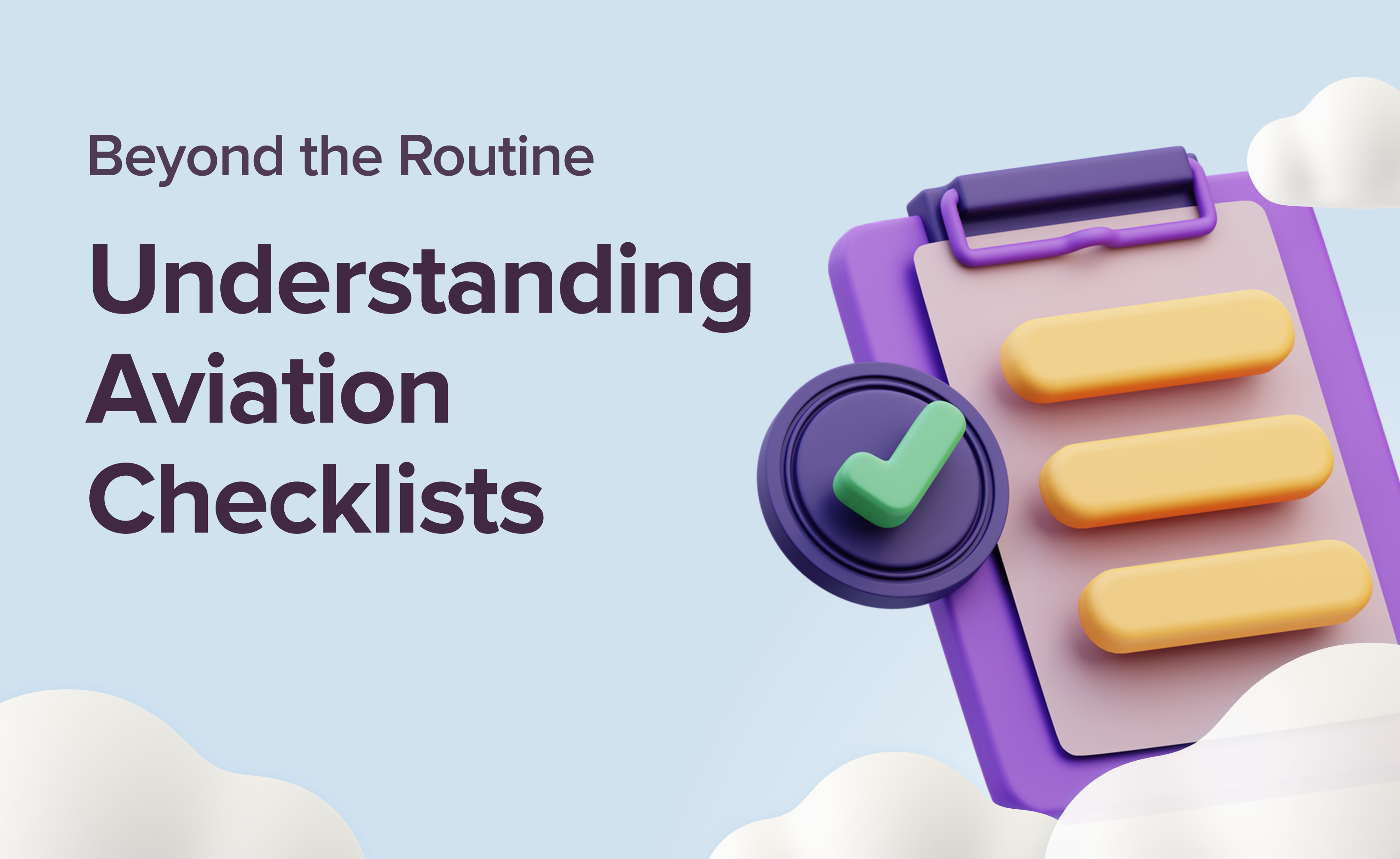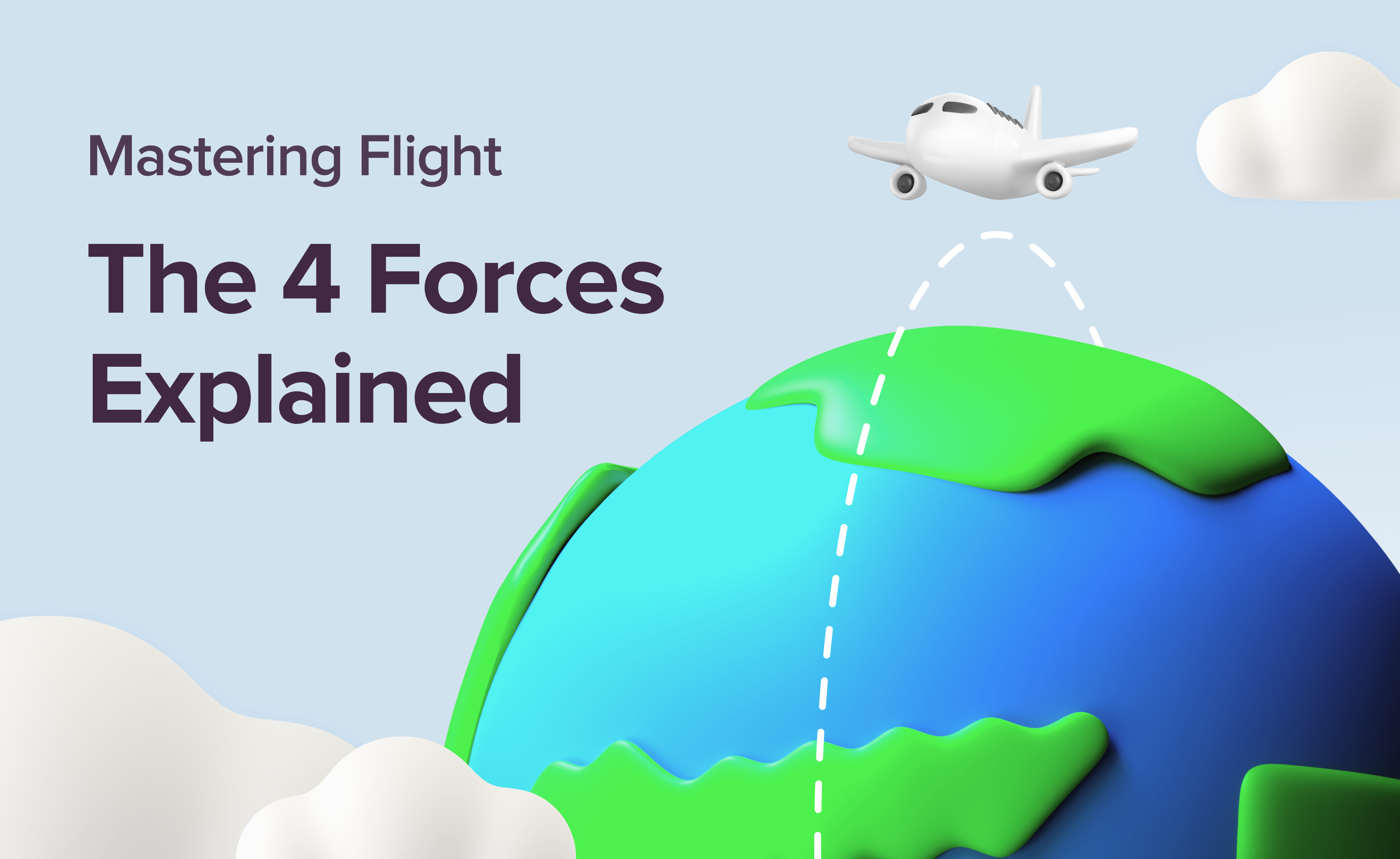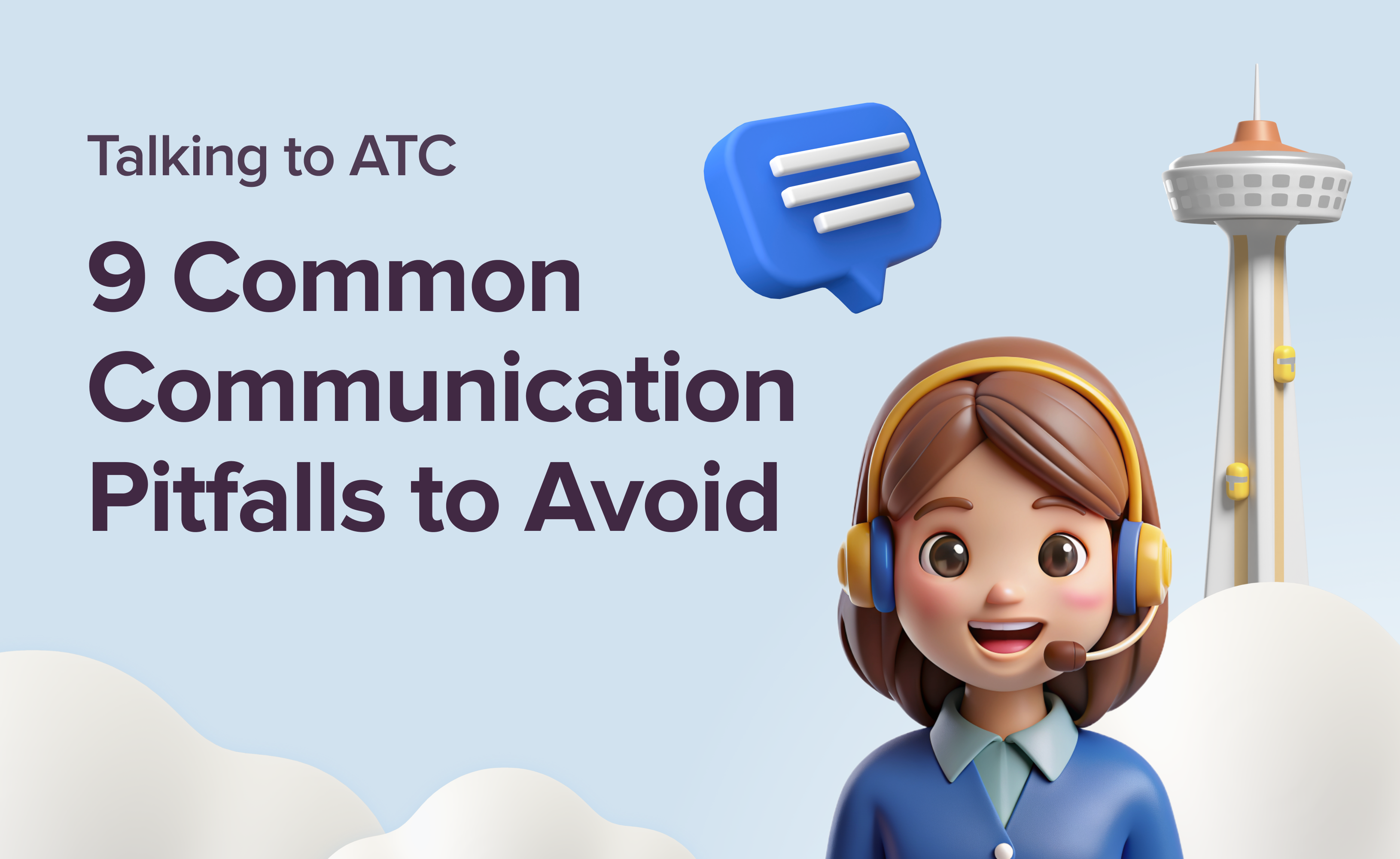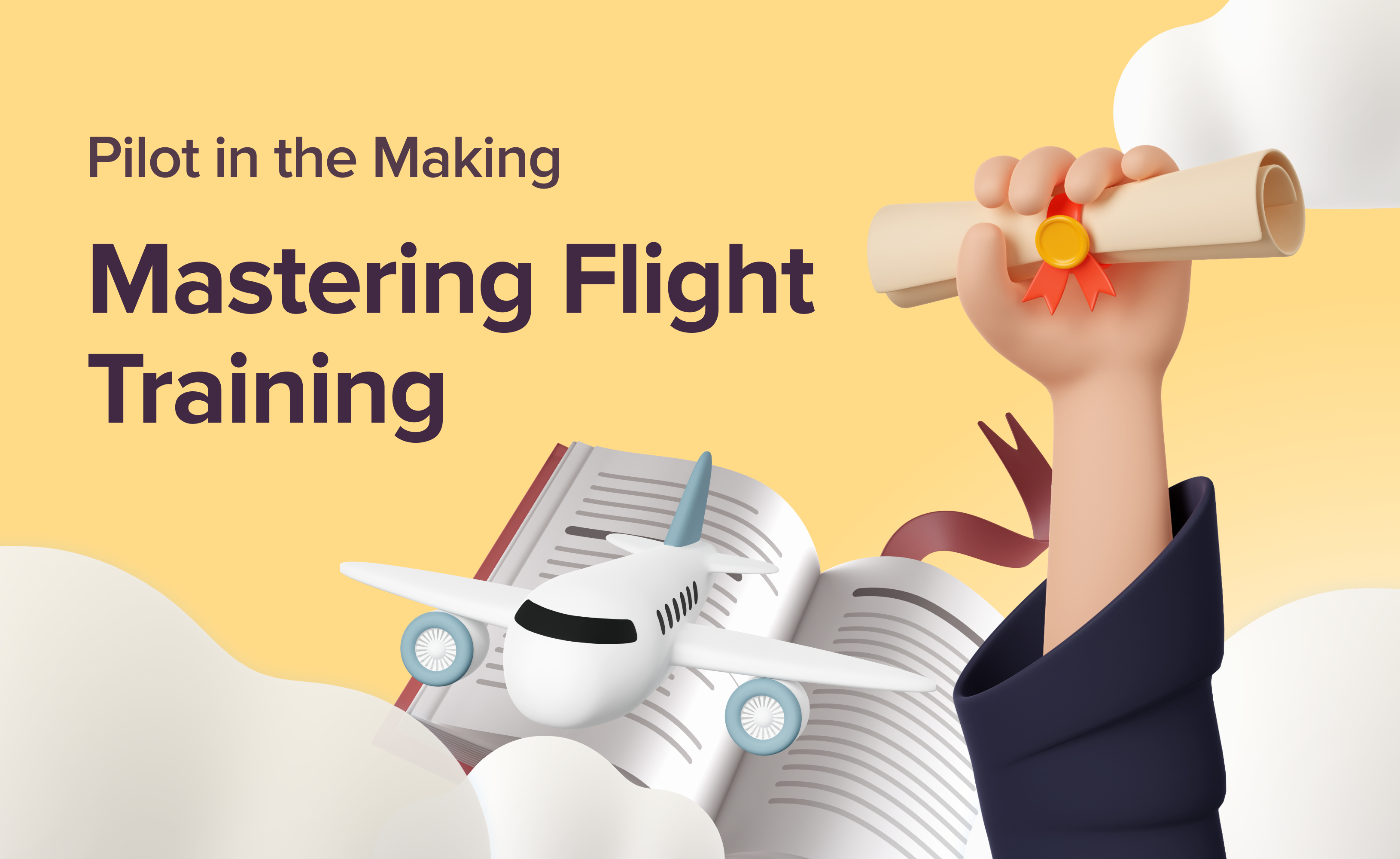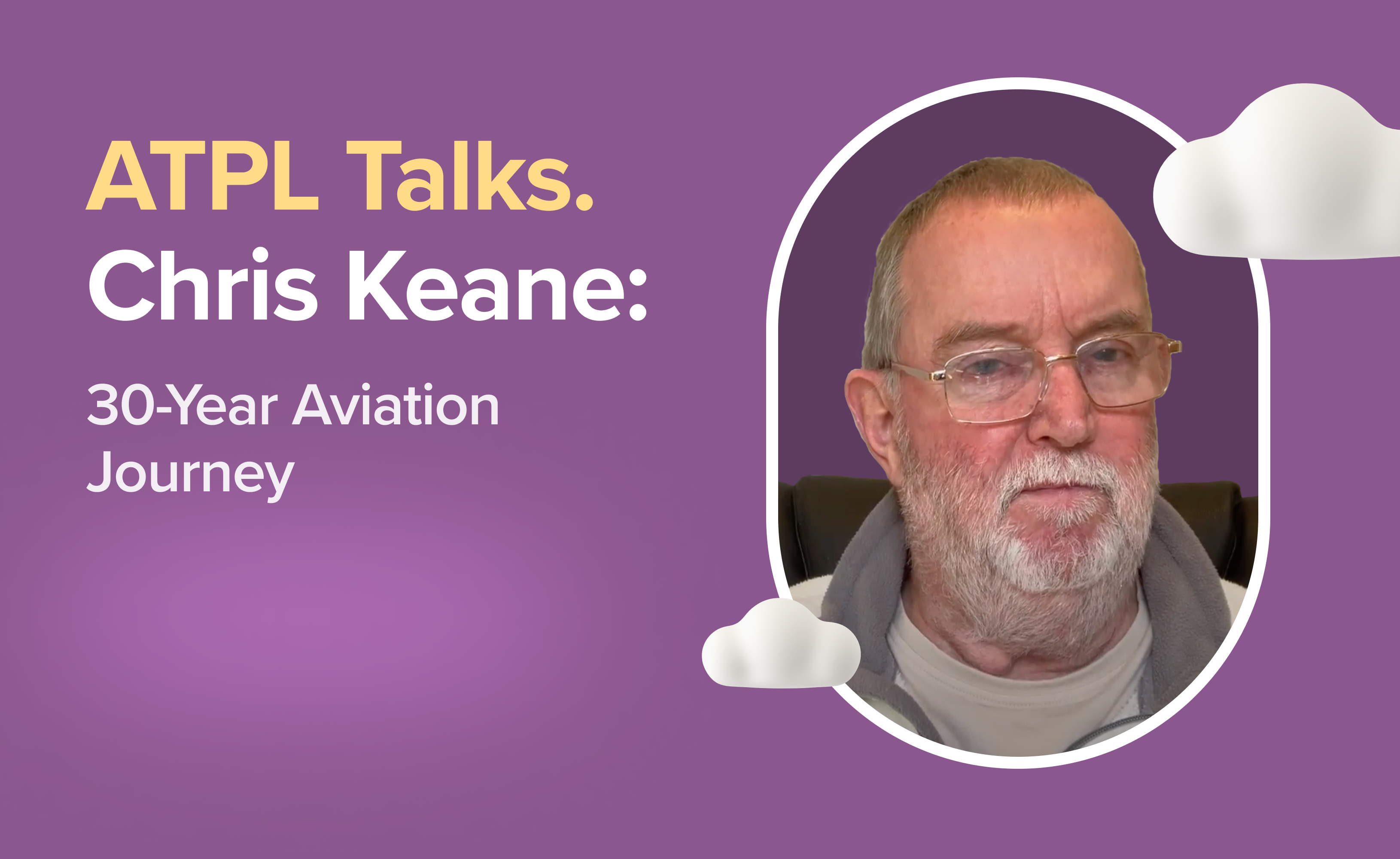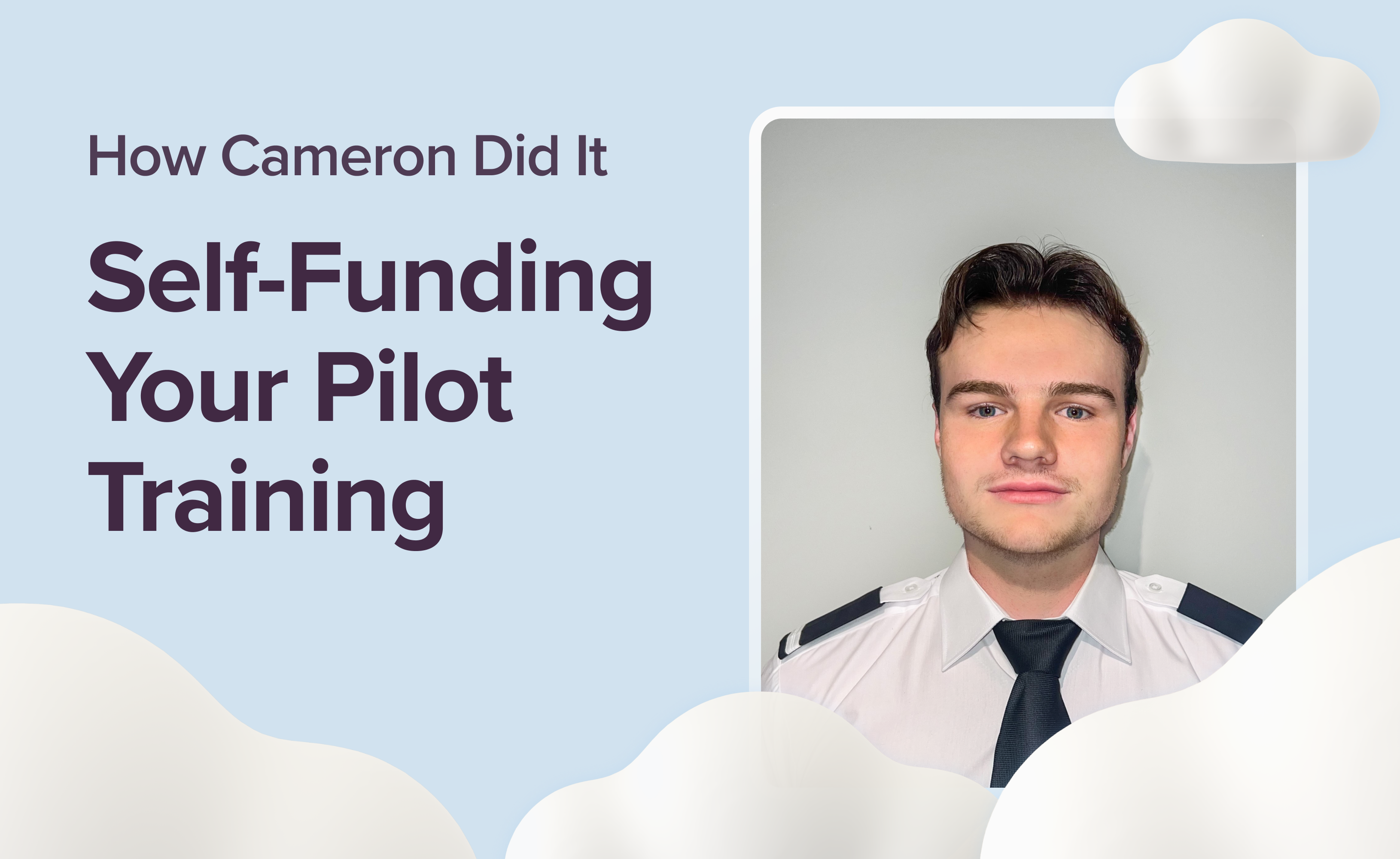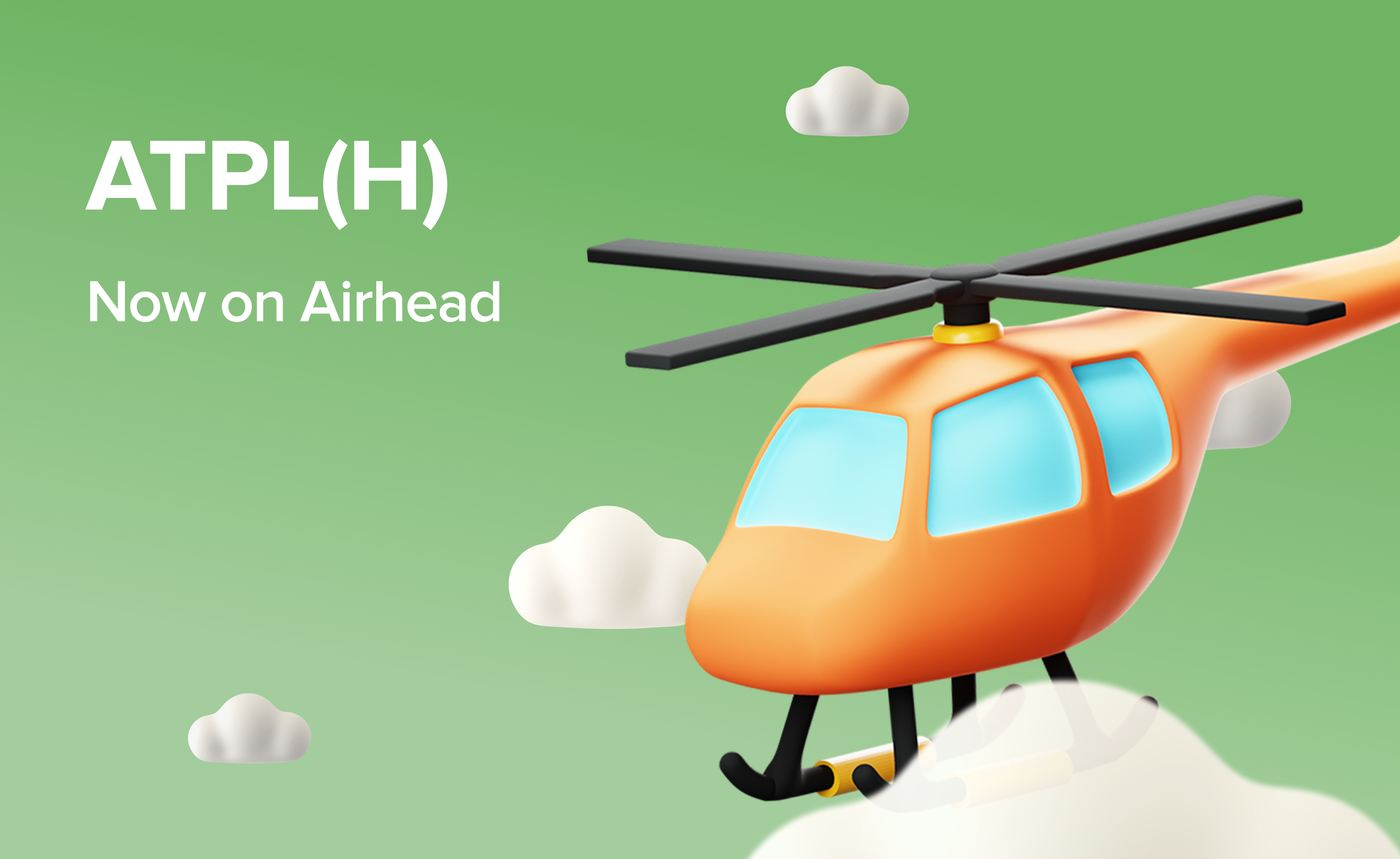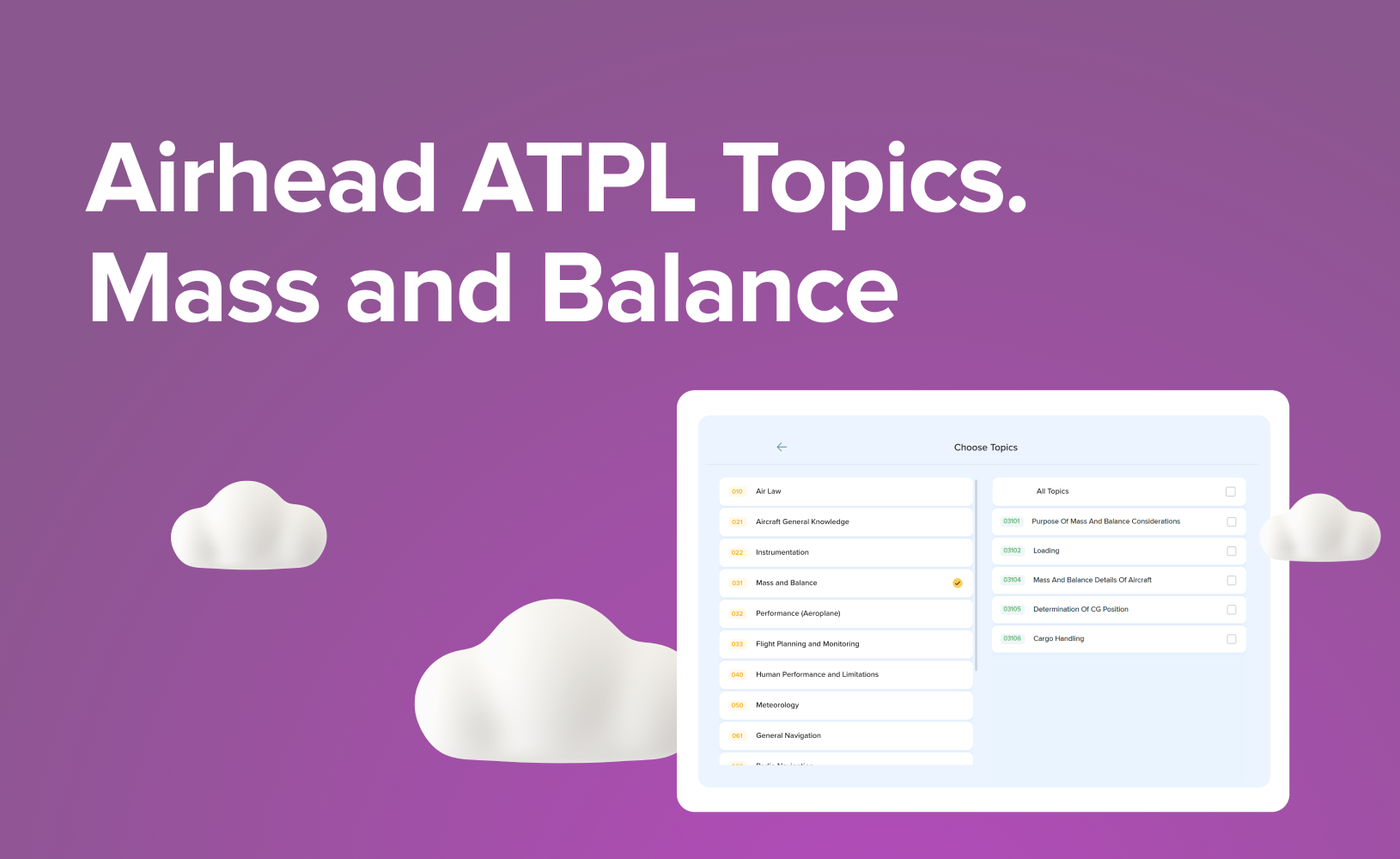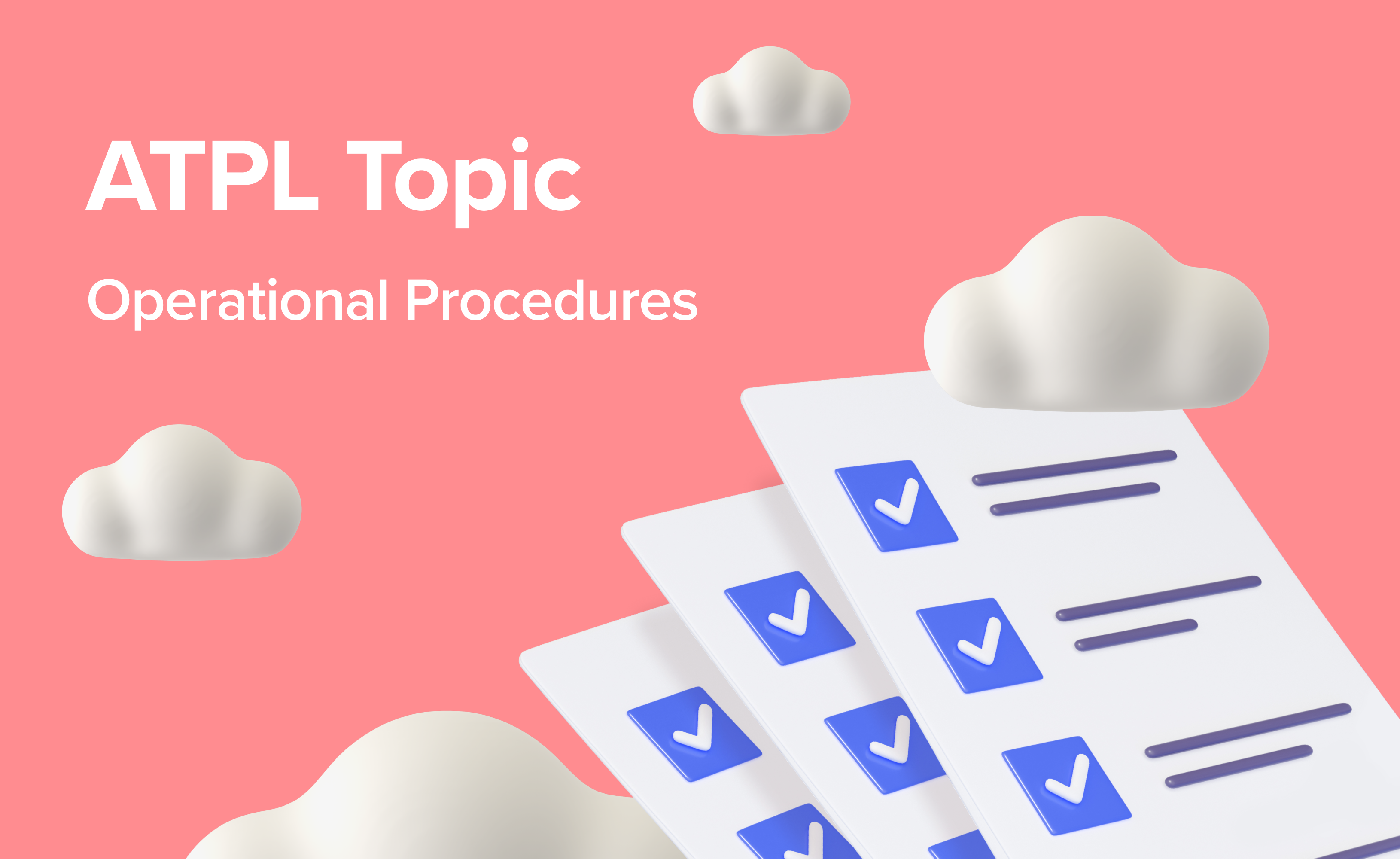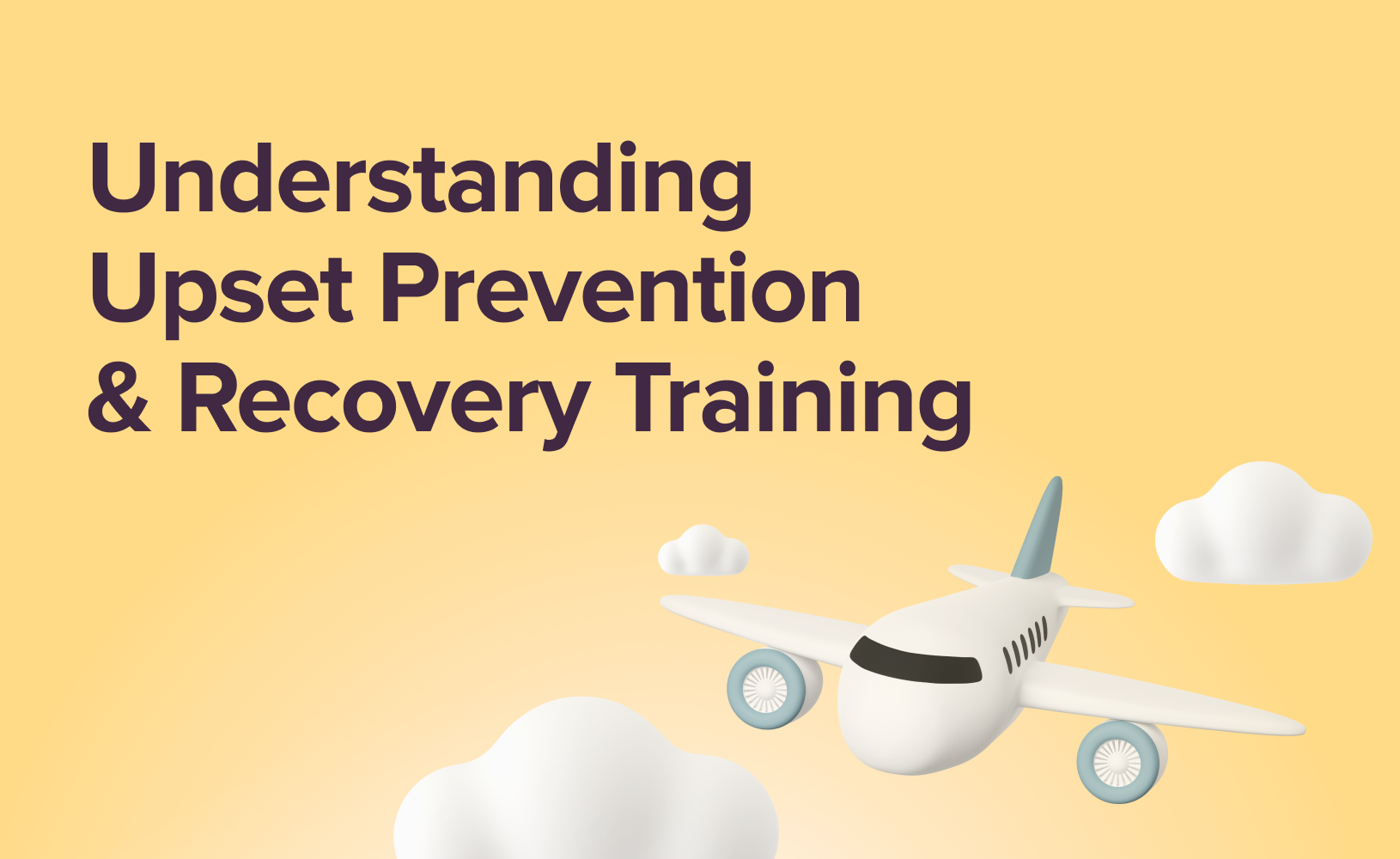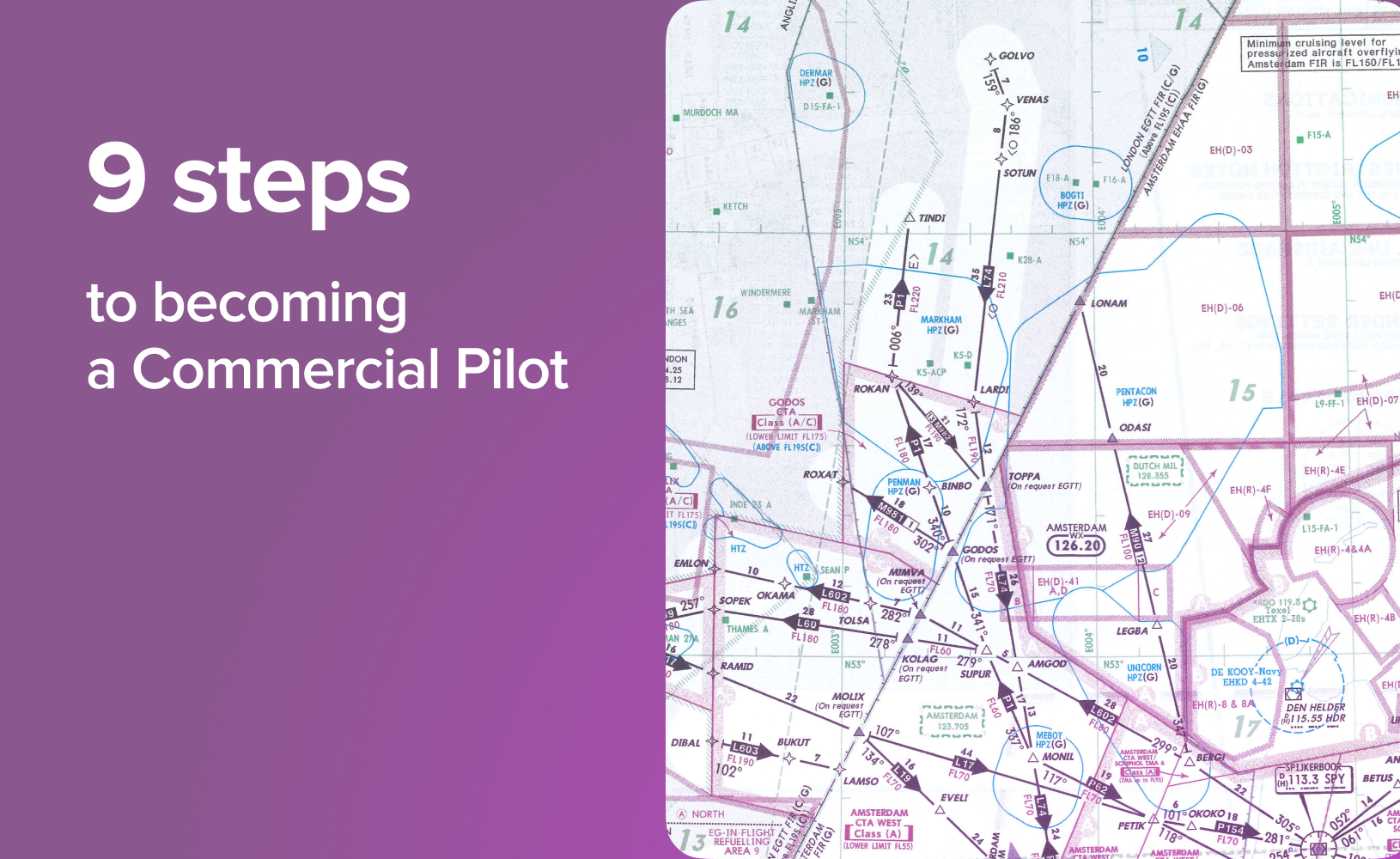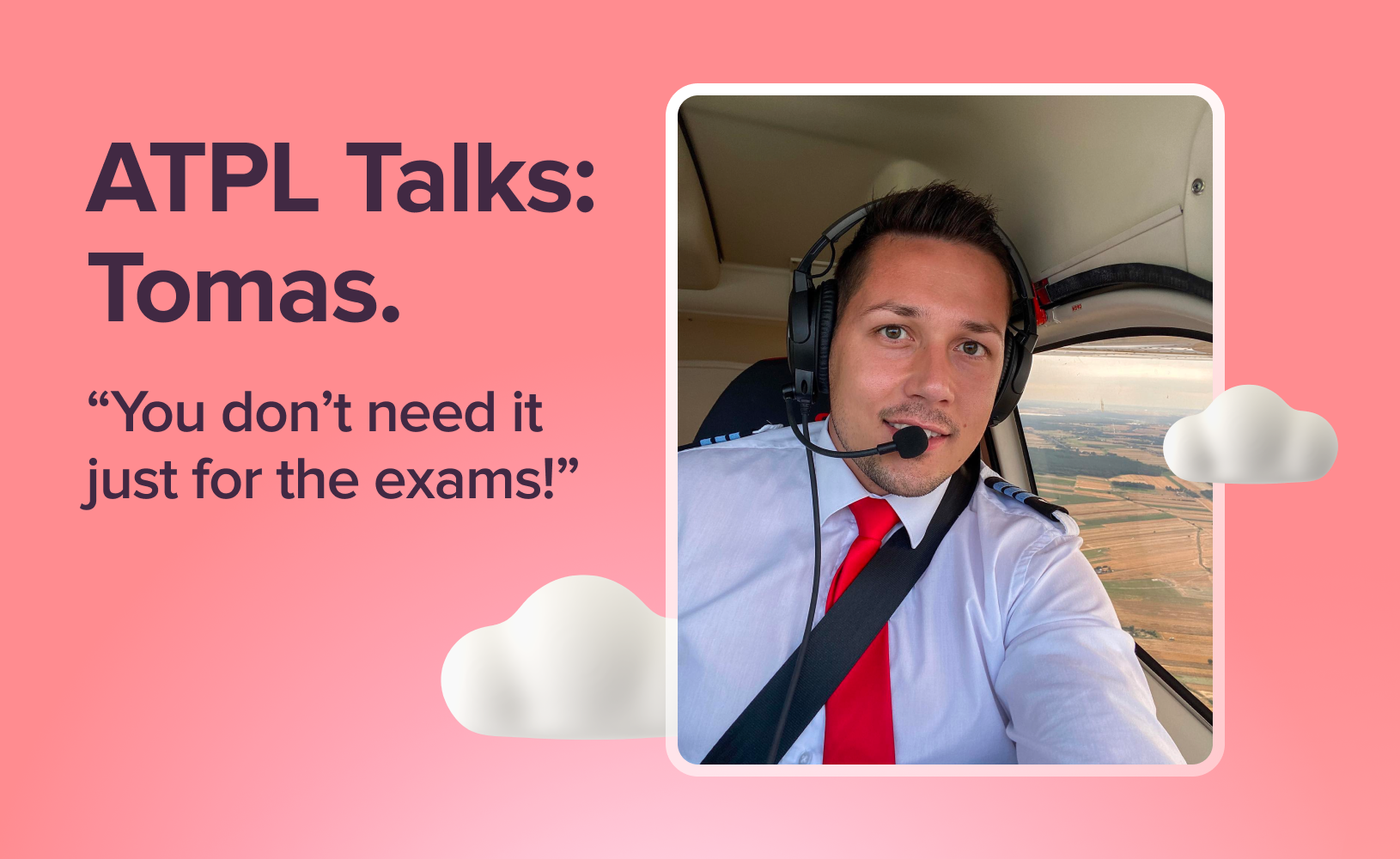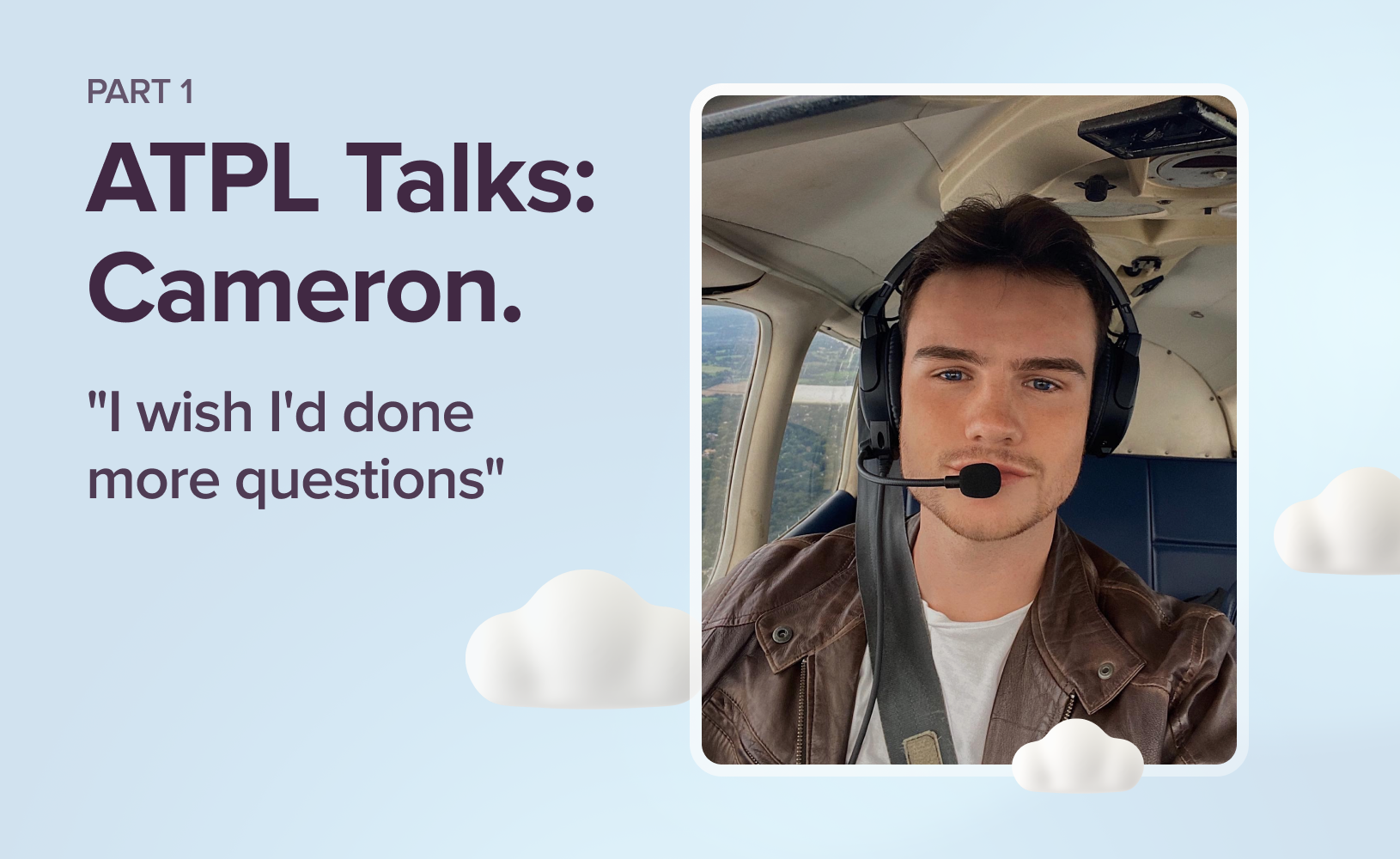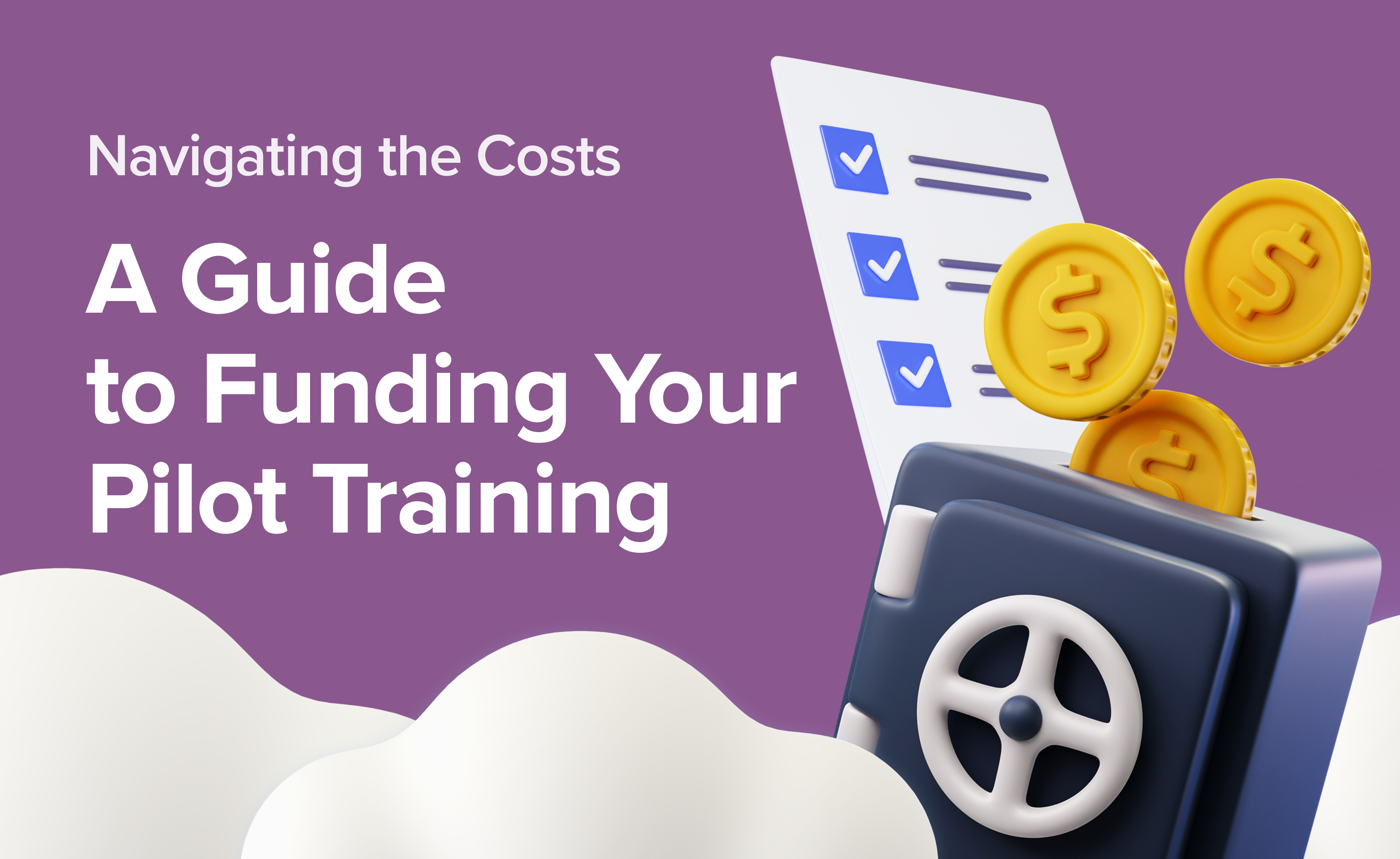Night Flying. A Guide for New Pilot Training
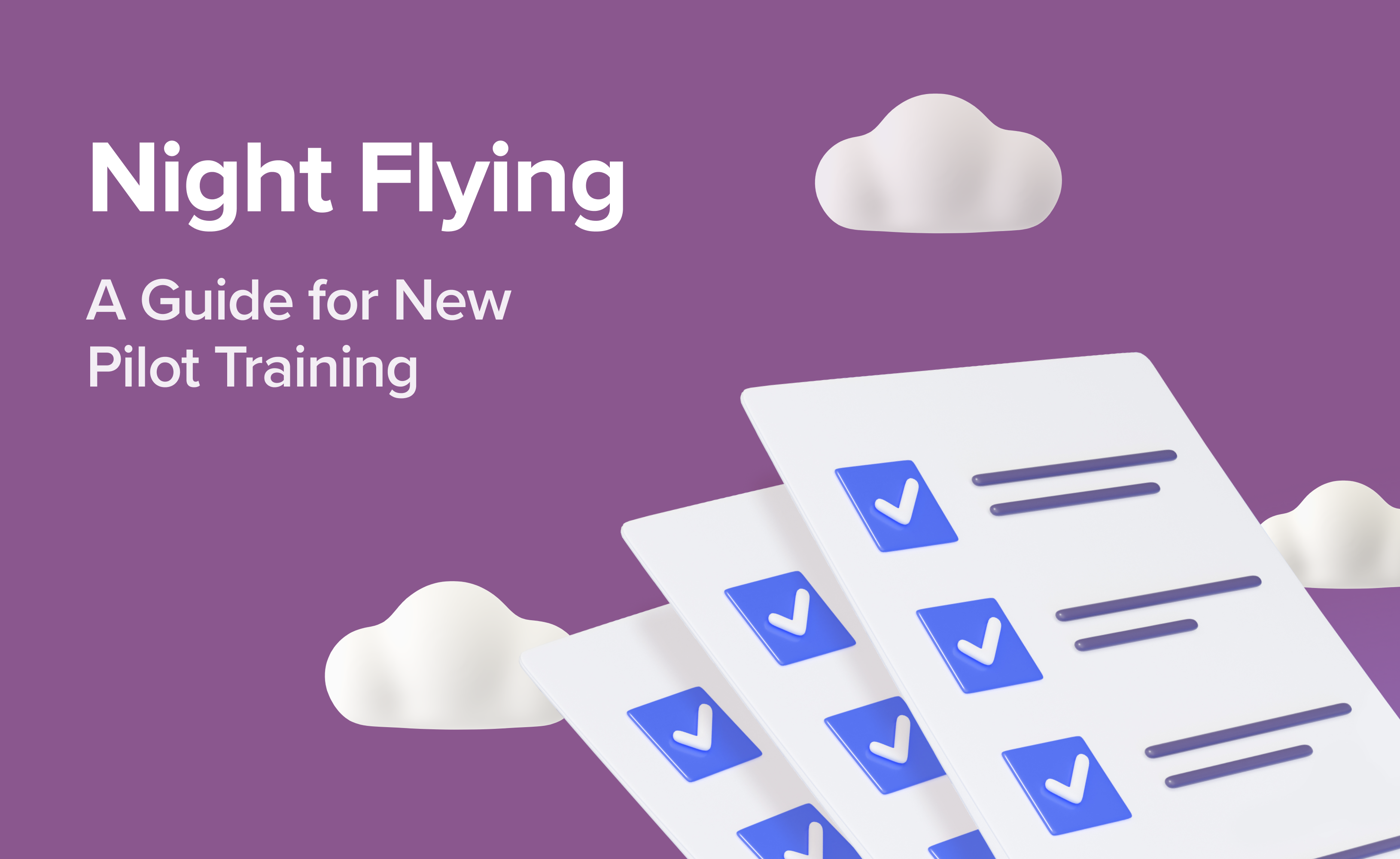
Night flying is an integral part of being a professional pilot. Airline pilots and other professional flyers often find a mix of day and night flying on their schedules. Ask most pilots about flying at night, and many will respond with words such as 'calm' and 'peaceful.' Indeed, night flying typically is serene, with a unique beauty that daylight hours can't replicate. However, it also presents challenges that aspiring professional pilots, whether pursuing ATPL, CPL, or PPL, must be prepared to handle. Keep reading to discover the essential aspects, navigate the challenges, and soar through the rewards of piloting after dark.
A Quick Introduction to Night Flight
For pilots pursuing an Airline Transport Pilot Licence (ATPL), Commercial Pilot Licence (CPL), or Private Pilot Licence (PPL), night flight training is a mandatory component of their curriculum. It ensures that the professionals are well-prepared to operate safely and efficiently, regardless of the time of day.
Night flying is important for two main reasons: proficiency and licensing requirements. On the one hand, you will feel safe or confident flying at night with proper training and practice.
On the other hand, to be eligible for a check ride or become a licensed pilot, you need to complete night training. It typically includes take-offs, landings, navigation, and emergency procedures, all performed in low-light conditions.
Essential Night Flying Training
1. Cross-Country Flight: You must complete a cross-country flight over 100 nautical miles, typically flying to an airport 50–60 miles away and returning.
2. Take-offs and Landings: You need to perform 10 take-offs and landings at night with an instructor. These exercises help you adjust to the different visual cues and lighting conditions.
3. Pre-Flight Preparation: Pre-flight inspections and briefings are crucial. You should discuss how night vision changes, how to conduct pre-flight inspections after dark, and other night-specific procedures.
Interesting Facts About Night Time Flying
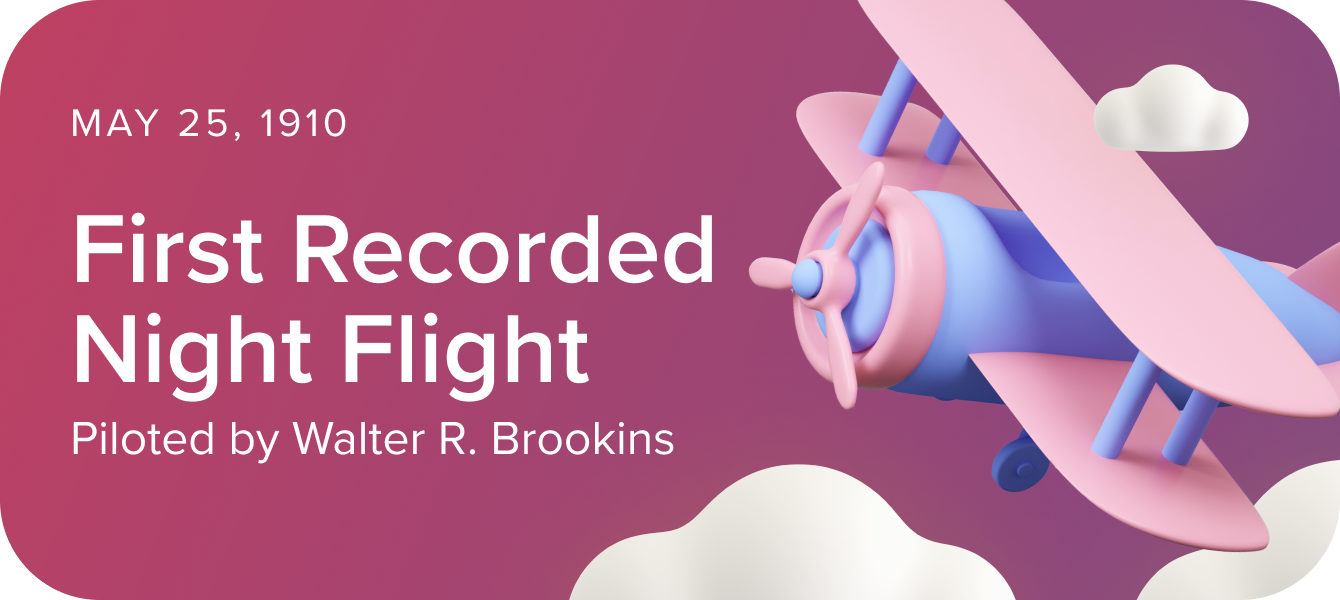
Night flying requires a significant shift in techniques, strategies, and mindset compared to flying during the day. This might not be immediately apparent, but several key factors come into play. Let's explore some fascinating aspects of flying through the starry night to understand this transition better.
The first recorded night flight happened way back on May 25, 1910. A daring pilot named Walter R. Brookins braved the darkness in a Wright biplane. His pioneering spirit paved the way for the incredible advancements in night aviation we see today.
Speaking of advancements, some military, and special operations pilots rely on high-tech night vision goggles (NVGs) to see clearly. These goggles amplify faint light sources, allowing pilots to navigate obstacles, terrain, and even other aircraft that would be invisible to the naked eye.
Safety is paramount, of course, and airports illuminate the night with sophisticated lighting systems. From runway and taxiway lights to intricate approach lighting systems, these visual cues guide pilots during take-off and landing, ensuring smooth operations even in poor weather conditions.
Research shows that our natural body rhythms, or circadian rhythms, affect our performance throughout the day. Pilots flying at night are keenly aware of these cycles and meticulously manage their rest and alertness to ensure peak performance when it matters most.
Finally, cruising at high altitudes, especially at night, exposes pilots to slightly higher levels of cosmic radiation compared to those at lower altitudes. While this exposure typically falls within safe limits, it's a factor that pilots and aviation authorities carefully monitor.
Key Aspects, Challenges, and Specifics of Night Flights
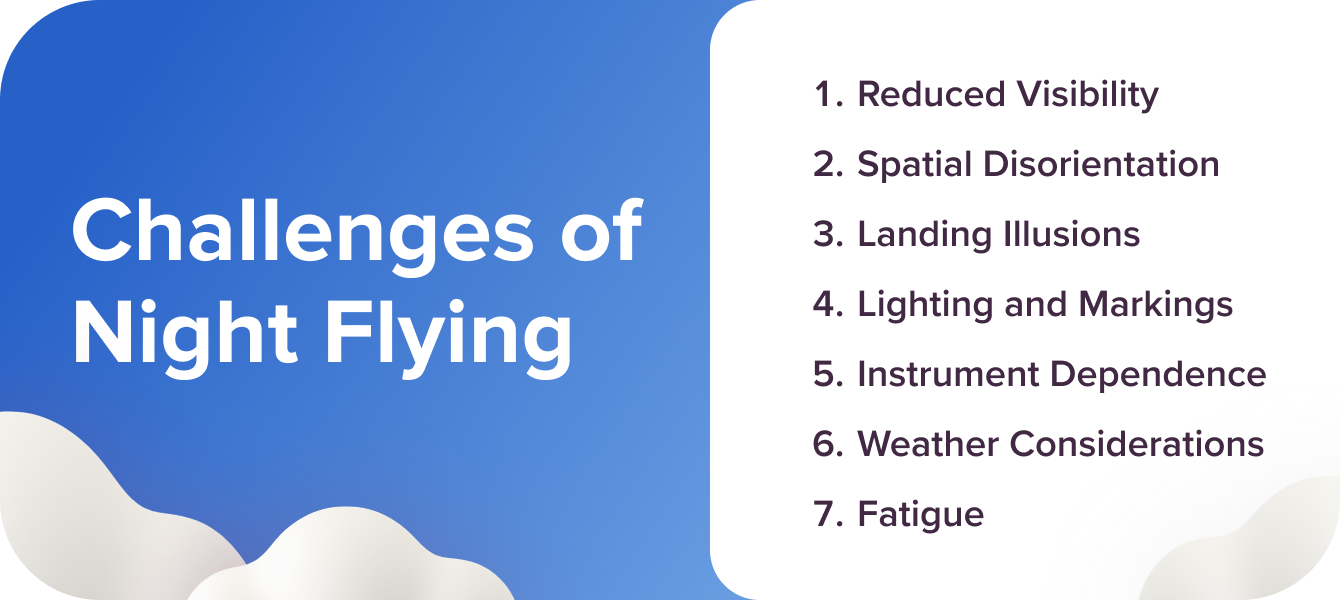
Night flying offers a unique experience. The air is often smoother, and there's less traffic, leading to a quieter and more peaceful flight. However, these benefits come with increased risks and challenges. Pilots must rely heavily on their instruments, which requires excellent instrument flight rules (IFR) skills. Additionally, the absence of visual references can cause spatial disorientation, a dangerous condition where pilots lose their sense of direction and position.
Night flying requires adjustments in how you operate the aircraft and perceive your environment. Here are some common challenges in night flying:
1. Reduced Visibility
The most obvious challenge is the lack of natural light. Reduced visibility at night affects depth perception and spatial awareness. It's similar to driving a car at night for the first time — everything looks different.
2. Spatial Disorientation
Without visual cues, pilots can easily become disoriented. This phenomenon, known as spatial disorientation, can lead to dangerous situations if not managed correctly.
3. Landing Illusions
The reduced visibility can cause landing illusions, making it difficult to judge height and distance accurately. Students often flare too high, misjudging their altitude.
4. Lighting and Markings
Identifying the destination airport at night can be tricky. As a future professional pilot, you need to recognise airport beacons and the blue omnidirectional lights on taxiways, which guide you to the runway.
5. Instrument Dependence
At night, you rely more on your instruments than on visual cues. Trusting your instruments over instincts becomes crucial for safe navigation.
6. Weather Considerations
Weather conditions can be more difficult to assess at night. Pilots must be adept at interpreting weather reports and forecasts to avoid adverse conditions.
7. Fatigue
Flying at night typically means operating during hours when the body is naturally inclined to sleep. Managing fatigue is critical to maintaining focus and alertness.
Effective Strategies for Night Flying
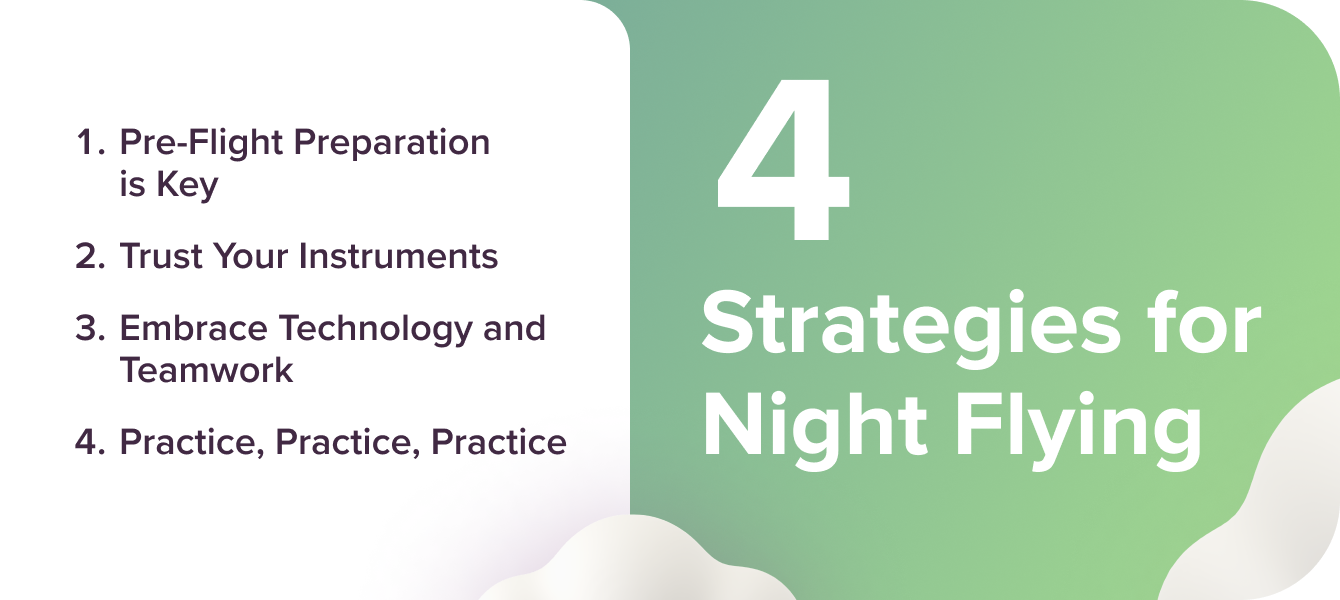
As a student pilot, adopting key strategies can help you navigate the darkness and confidently take to the skies.
1. Pre-Flight Preparation is Key
Always review weather forecasts and NOTAMs (Notices to Airmen) thoroughly. Night flying demands even greater attention to potential weather changes and airspace restrictions. Planning your route meticulously ensures you understand the airport layout, taxiway diagrams, and runway directions.
2. Trust Your Instruments
At night, visibility can be deceiving. Learning to trust your instruments over your visual perception is crucial, especially during critical phases like take-off, navigation, and landing. Keeping a clear picture of your surroundings, including other aircraft, potential obstacles, and your position relative to the terrain, enhances your situational awareness and ensures a safer flight.
3. Embrace Technology and Teamwork
Modern avionics, such as GPS, synthetic vision systems, and enhanced vision systems, offer significant advantages during night flying. Get familiar with these technologies and learn how to use them effectively. They provide additional layers of safety and situational awareness, making night flights more manageable.
Additionally, practising effective communication and teamwork in the cockpit is essential. If you're flying with an instructor, engage them in decision-making and cross-checking instruments. This collaboration ensures a smooth and safe flight.
4. Practice, Practice, Practice
The more night flying experience you accumulate, the more confident and proficient you will become. Equally important is honing your instrument skills. Regular instrument flying lessons will build your proficiency, which is essential for night flying when visual cues are limited.
By following these strategies and diligently practising, mastering night flying will be within your reach. Embrace the unique challenges of night flying and enjoy the serenity and beauty it offers.
Rewards of Night Flight Training

Night flight training, while presenting its challenges, unlocks a world of rewards for pilots. It's often described as a "zenith experience," a peak moment of tranquillity and wonder. Successfully navigating the darkened skies instils a deep sense of accomplishment and bolsters a pilot's confidence.
But the benefits go beyond personal satisfaction. Night flying hones a pilot's overall skill set, making them more versatile and adaptable to various flying conditions. Imagine gliding through the velvet darkness, enveloped by the serenity of quieter airspace. Below, the world transforms into a tapestry of twinkling city lights and illuminated landscapes, a breathtaking spectacle unlike any other encountered during daylight hours. Experienced pilots often echo the sentiment, “The best flights are night flights,” not just for the smoother air, but for the unparalleled peacefulness and awe-inspiring views.
Final word
Night flying is both a challenge and a reward for aspiring pilots. It demands meticulous preparation, strong instrument skills, and a keen sense of situational awareness. However, the serene beauty of the night sky and the quiet, smooth flights make it an experience worth pursuing. So embrace the opportunity to train for night flights, as it will make you a more versatile, confident, and skilled aviator.

Questions and Answers
What are the risks of flying at night?
The risks of flying at night include reduced visibility, increased reliance on instruments, the potential for spatial disorientation, and difficulty assessing weather conditions. Additionally, fatigue can be a significant factor during night flights.
What are the requirements for night flights?
For night flights, pilots must have completed specific training and meet regulatory requirements, which include a certain number of night flying hours, take-offs, and landings. They must also be proficient in instrument flying and have a thorough understanding of night navigation and emergency procedures.
How do pilots know when to start landing at night?
Pilots use a combination of airport lighting systems, instrument approaches, and navigation aids to determine when to start landing at night. Runway lights, approach lighting systems, and PAPI (Precision Approach Path Indicator) lights help pilots align and descend accurately onto the runway.
Is flying at night dangerous for pilots?
While night flying poses additional challenges and risks, it is not inherently dangerous if pilots are well-trained and prepared. Proper training, proficiency in instrument flying, and effective risk management strategies mitigate the dangers associated with night flying.

















